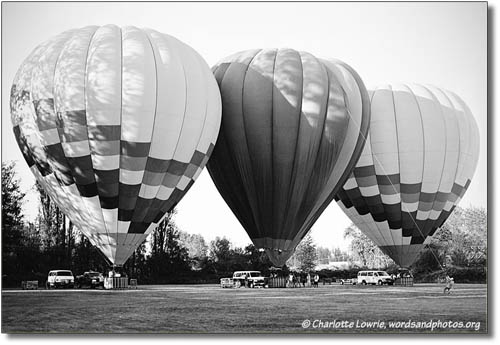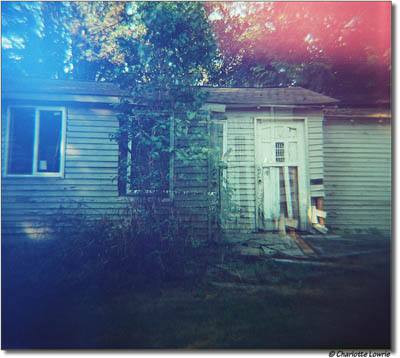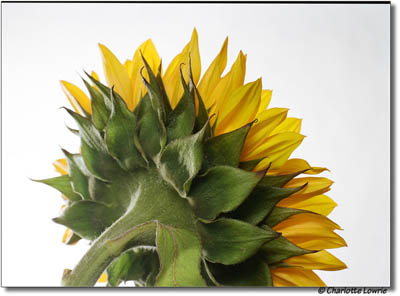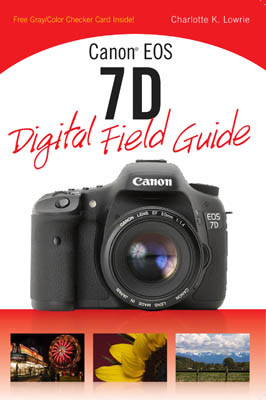By Charlotte Lowrie
 Over the years, I've learned that when every picture I shoot looks disturbingly like the one before it, and the one before it, it's time to re-energize my shooting. Sometimes, I intentionally set out to inject a fresh approach, and other times, the invigoration comes as a byproduct of beginning another project.
Over the years, I've learned that when every picture I shoot looks disturbingly like the one before it, and the one before it, it's time to re-energize my shooting. Sometimes, I intentionally set out to inject a fresh approach, and other times, the invigoration comes as a byproduct of beginning another project.
Getting back into
film photography
Most recently, two decisions prompted a renewal. First I decided to try Lomography--an extremely popular form of photography that centers on shooting with a plastic toy camera, generally a Diana or a Holga. Most of the classic plastic cameras shoot only 120 (medium-format) film. The Diana's plastic lens, coupled with a less than tightly sealed camera body result in one-of-a-kind soft-focus images. Dust spots, scratches, and strange color renderings are all part of the charm of logmography images. For the first time in a long time, I was excited. I could barely wait to get the $50 Diana F+ camera.
And second, since I was going to shoot film and since I cannot afford $12,000 to $40,000 price tag for a higher resolution digital back for my medium-format Hasselblad H1 camera, I decided that I would use the Hasselblad to shoot film. I could then have the negatives scanned, edit them in Photoshop, and then print the final image.
As my plans gained steam, I realized how much I'd forgotten about film photography. I researched labs who could print true black-and-white prints, and realized that film has become a rare art form that seems to be on the verge of becoming extinct. As a photographer who began shooting with film and developing and printing Tri X 400 film in my own darkroom, it never occurred to me that film would ever disappear. But the more I searched, and the more people I spoke with, it became clear that film may indeed may go completely away in the not so distant future. But I was undaunted.
I found myself at the film counter at Kenmore Camera, my favorite camera dealer, feeling a little lost. I had to remember what I needed to know about films; things like buying daylight-balanced color film, getting film that uses C41 processing for black-and-white just to avoid driving back and forth to Seattle to get my black-and-white film processed. The drives to and from Seattle would make shooting film an even more expensive proposition. So I chose Ilford XP2 400 film that uses color processing so that I could get the film processed at Kenmore Camera. And since Kenmore Camera scans 120 negatives, I could get everything done at one place.
 Then, of course, I had to relearn how to load film in the Hasselblad. Once I began shooting, I had to remember to advance the film manually in the Diana, else I would end up with potentially creative, but unintentional, double exposures.
Then, of course, I had to relearn how to load film in the Hasselblad. Once I began shooting, I had to remember to advance the film manually in the Diana, else I would end up with potentially creative, but unintentional, double exposures.
Returning to deliberate photography
As I began shooting film, I was constantly aware that every frame had a cost associated with it. Very quickly, I was much more selective in what I chose to photograph. I framed every image very carefully wanting the first shot to be the right shot. I considered putting a new battery in my handheld light meter just to double-check the light meter on the Hasselblad.
Suddenly, I remembered that a big part of being a photographer is being a careful photographer--planning each shot, checking every detail before exposing a frame of film, and ensuring that the framing and composition are just as I want them--all before I ever press the shutter button. Suddenly, I became a very deliberate photographer again. I began my career as a deliberate photographer, but with years of digital shooting, it's became easy to just retake a less-than-perfect shot, or to fix it in Photoshop. Digital is a great medium, but it encourages a run-and-gun approach to shooting that often encourages a sloppy approach to shooting. And it's sad to think that many, many photographers may never know what it's like to shoot film.
What's more, with the Diana, exposure was pretty much my best guess. There are no specific apertures, no specific shutter speeds, and only some very general guidelines on what settings may work in different kinds of light. It was all a grand, creative, and fun experiment. And I emphasize fun.
Like Christmas morning
 Then I learned again the anticipation of waiting for the film to come back from processing. I didn't have prints made, so I studied the disk of high-resolution negative scans with the eagerness of a child on Christmas morning opening gifts. I had some winners, and I had some losers. But when I first saw the scans, I was stunned by the quality and the "look and feel" of the film images. I had forgotten how beautiful film images are. Wow! best describes my reaction.
Then I learned again the anticipation of waiting for the film to come back from processing. I didn't have prints made, so I studied the disk of high-resolution negative scans with the eagerness of a child on Christmas morning opening gifts. I had some winners, and I had some losers. But when I first saw the scans, I was stunned by the quality and the "look and feel" of the film images. I had forgotten how beautiful film images are. Wow! best describes my reaction.
Now I wake up in the morning thinking of specific projects where I can shoot rolls of black-and-white film, or a roll of
Kodak Portra film. Shooting film has re-energized my passion for photography. I sincerely hope that film does not go away. Rumors say that the film-manufacturing giants are considering discontinuing film. What a terrible waste that would be. Film is as much an integral part of the art of photography as digital cameras are.
If you still have a film camera, I encourage you to put a roll of film through it again just to experience the joy of film images again. For me, it's been a reawakening that continues to make me wake up excited and anxious to find even more time to make new images.
to make me wake up excited and anxious to find even more time to make new images.
Related articles:
Also be sure to check out my book, the
Canon EOS 7D Digital Field Guide.

